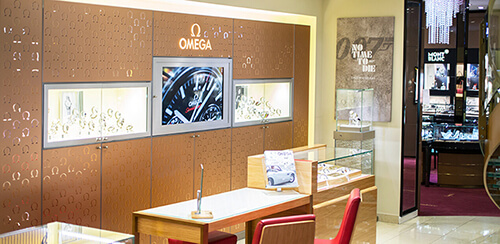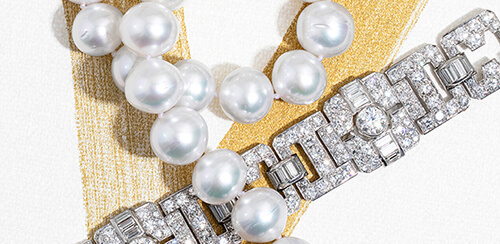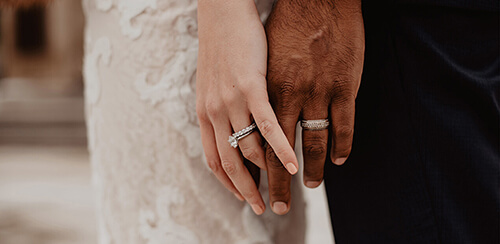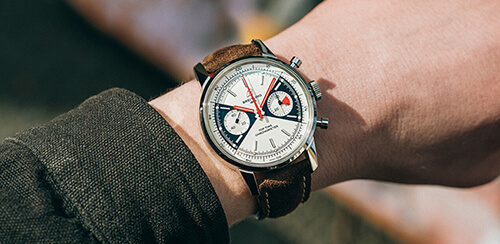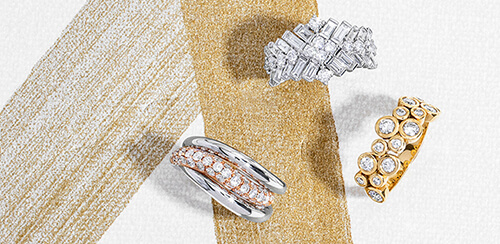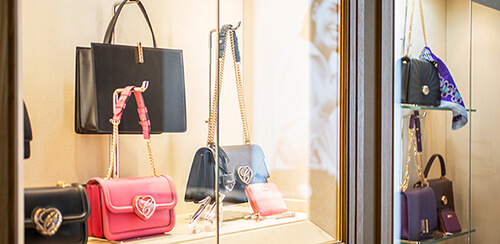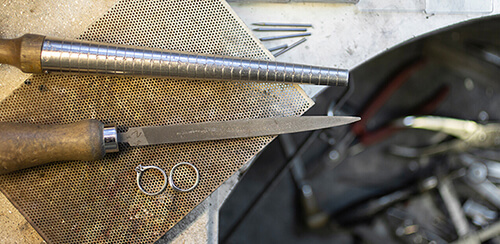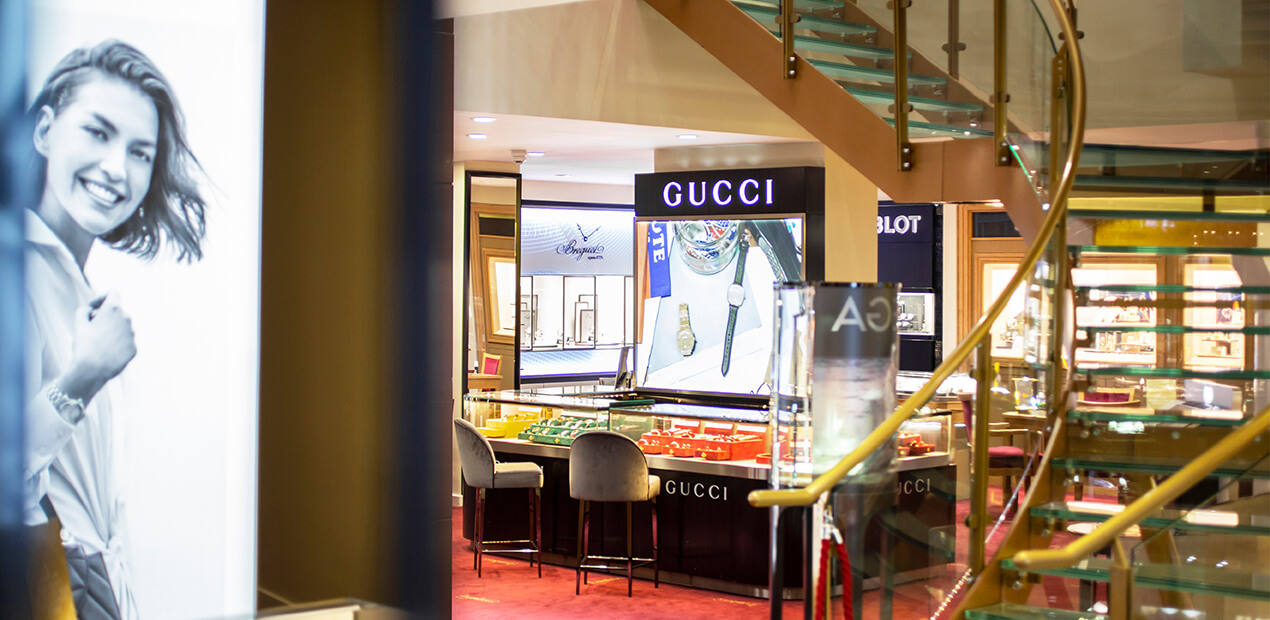Toggle Nav
DIAMOND - THE 4 C'S: CARAT
20/04/2022

Carat weight is by what all gemstones are mostly sold as. It’s not about how big a stone is, weight is a specific measurement. A full metric carat stone is equal to 0.200 grams (200 milligrams or 1/5 of a gram). A carat is divided into 100 equal units called points.
Weight is probably one of the first things all diamonds are sold by, in the case of small stones called “mele” stones of 3mm and under however are normally sorted through a series of sieves to within points of a mm diameter difference of each other, this process merely sorts stones out using their girdle diameters as a starting point. This is done to speed up the process for matching of small stones which will eventually become accent stones for a piece of finished jewellery with halo’s, pave set pieces etc. These stones will individually weigh less than 0.001 of a carat up to a maximum of around 0.10 of a carat, using the sieving process.
Once this is done mele stones are then further assessed for proportion differences from a table down position, such as differences in total depth, crown depth, girdle thickness and more importantly pavilion depth differences. These factors determine whether a series of stones will match closely when they are then inverted to a face up/table up position, because stones with the same diameter and similar depths will then sparkle similarly when used collectively. This however is not to say they will sparkle well, they will only sparkle similarly to those they are matched with.

Stones with very deep pavilions and overly thick girdles prove difficult to set into channel settings. They can also add weight without necessarily adding to a stone’s beauty. However shallow stones with extremely thin girdles and shallow overall proportions often lack lustre, and “knife edge” girdles (this is where upper girdle facets and lower girdle facets meet without any girdle depth between) often are susceptible to breaking during setting, or if exposed in final made pieces of jewellery can sustain knocks during wearing and might break. These principals come into greater consideration when purchasing heavier, individually graded stones above 0.18 of a carat.
Stones above 0.10 of a carat individually, are assessed individually and can also be collectively assessed if using for creating a larger cluster style pieces, for larger statement eternity rings, or as centre stones for clusters with small mele as their surrounds. The important thing to note is that the mele stones will have already been quickly assessed for the other quality factors, such as colour and clarity to make it easier for making as closely matched sets as possible.
These days individual stones from around 0.18 of a carat and greater might well have been sent to a lab for individual assessment (grading). GIA is regarded by consumers and the trade alike as the strictest graders of diamonds the world over. This is because GIA created the international modern accepted grading system for the grading of diamonds and all other grading companies use these standards for grading diamonds, however they may not be as strictly assessed as GIA.
When it comes to carat weight, all other quality factors being equal, precision cutting, colour, clarity, presence or lack of fluorescence etc. Carat is probably the greatest price influencer. That is not to say it should be the deciding factor for purchasing a particular stone. As without precision cutting, a stone won’t then have the ability to handle light correctly within the finished cut stone, so then it won’t sparkle correctly. Colour within diamonds can be seen from a G & below to the untrained eye. However, the presence of faint - medium fluorescence might cancel out a faint tint of yellow in near colourless stones. But equally overly strong fluorescence might then give a milky or oily appearance to a stone in daylight. Clarity characteristics in low grade stones impair the travel of light within a stone and subsequent stones can lack lustre, and stones in very low clarity with surface reaching fractures can break during setting or through wear, where higher clarity characteristics that are not visible to the unaided eye won’t diminish beauty. All these factors should be considered if you are interested in purchasing a significant stone.

If you are in the market for purchasing a diamond, it’s also worth considering, especially if working with a tight budget. Weight can affect cost, so if the ideal purchase is to fit a price point that doesn’t allow what is considered the “magic “ weights… 0.25, 0.33, 0.50, 0.75, or the all desirable 1.00ct stone. Compromises can be made to good effect, for example going for an approx 0.45 - 0.47ct (considered a light half in the trade) weight will have a similar appearance of a .50ct stone and as long as quality factors are not compromised in beauty it can still show as an impressive stone. Without the price jump of the “magic weight” this can be said for all of the “magic weights” save a bit of money by coming just under. However, if the ideal is to have one of these “magic weight” stones, my personal recommendation for purchasing a stone is to go for the best quality at the price point you are happiest to spend. So if it means that the impressive 0.75ct stone is out of reach without compromising on all the quality factors, go for the 0.50ct colourless, high clarity, excellent cut, which will sparkle far greater than the low quality included stone with strong fluorescence and lacks brilliance, just because it’s 0.75ct. You’ll be a happier owner of the better quality because it will always sparkle better when it’s kept clean.
If you are wanting an “investment stone” going for one of these “magic weight” stones in the highest quality, is something to consider as they will retain better second-hand value. If the ideal is to have a 1ct stone, my recommendation is to purchase a stone over the full 1ct if possible, in the best quality you can afford, for example a 1.03 - 1.05ct, so that if ever in its lifetime it sustains any minimal damage like a scratch across its table, or a tiny chip to its girdle, and during re-polishing hopefully it doesn’t drop below this “magic weight” and subsequently lose a lot of value. Because although diamonds are the hardest mineral on earth, they are however not indestructible. This principal can be applied to pretty much all the significant “magic weights”.
If you need further help or advice with your diamond purchasing, please come into store and ask for help from one of our diamond specialists.

